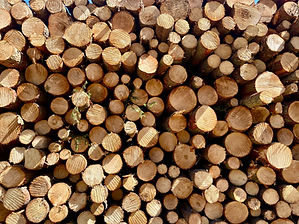top of page

Maintaining a healthy forest while maximizing your timber productivity involves a long-term view and a general understanding of how things work. Below we have provided you with some of our most frequently asked questions concerning our services so that you can make an informed decision about land management wants and needs.
Frequently Asked Questions
Why do I need a forester?
1. Carrying Capacity: This is essentially the land’s ability to support life, whether in terms of forest growth or animal life. It’s determined by a number of factors such as soil type, aspect, slope, etc. which in turn affect the availability of water, nutrients, habitat for wildlife and the ability of trees to anchor themselves to the forest floor. As the forest grows, trees begin to compete with each other as they expand their root systems and canopies. Eventually, individual stems gain an advantage over others, and are able to assume a more dominant position in the forest stand. As this continues, and the density of growth increases, the overall health and vigor of the forest will suffer. A well planned and timed thinning of the forest reduces competition, removes suppressed trees, and spaces out Crop and Leave trees which can make better use of the land’s resources.
2. Climate Concerns: Climate Change has created an awareness of our demands on the environment, and exposed some negative consequences. The forest provides a valuable role for life on the planet through the process of photosynthesis whereby carbon dioxide (CO2) is broken down into 2 oxygen molecules which are released back into the atmosphere, and 1 carbon molecule which becomes stored as wood fiber in the tree. The tree is, in essence, a carbon vessel. If the forest is not managed, trees will eventually die and decay, at which time carbon is released back into the atmosphere. In a managed forest, those trees which would otherwise fall out of the stand though natural selection, are harvested and milled into useful wood products that will continue to store the carbon. Forests are carbon sinks and play a valuable role in this time of climate awareness. There are Carbon Credit Programs available to forest ownerships that meet certain criteria, which can provide residual income to the forest owner.
3. Financial Return: A well managed forest is a productive forest that can provide financial returns on a periodic basis for the landowner. These periodic bases are rotation cycles for the forest, and occur approximately every 12-20 years, depending on the species involved and the site upon which they are growing. As discussed under Carrying Capacity, these cycles are thinnings which reduce stand competition and redistribute available resources to fewer, select trees. In addition, there is a tax treatment available that allows the landowner to avoid some of the income tax liability through depletion allowance calculations which, though a bit complicated, can be prepared at no cost to landowners.
Forest Management Do's & Don'ts
DO: Identify species of special concern which will either positively or negatively affect the residual stand.
DON’T: Utilize diameter limits to determine what is harvested.
DO: Have all necessary markets available prior to commencing harvest.
DON’T: Continue a harvest if necessary markets become limited or unavailable.
DO: Identify CROP TREES that are of a desired species, with quality genotypes that have clean boles and large crowns with a capacity to produce ample seed, then space them accordingly in the residual stand to accommodate seeding characteristics for that species.
DON’T: Target any species or grades; allow the forest stands to dictate what should be harvested or left as a component of the residual stand.
DO: Identify FILLER TREES that compliment the CROP TREES and which provide a solid species mix and size class distribution.
DON’T: Ignore the importance of maintaining a diverse mix of species which protects the stand should an invasive pest target an individual species such as the Emerald Ash Borer or Woolly Adelgid.
DO: Utilize Silvicultural Systems when prescribing a harvest. These systems include the Single Tree Selection System, Group Selection System and Variable Retention System for Uneven Aged Management, and Seed Tree, Shelterwood, Clearcut or Coppice Systems for Even Aged Management. These are called Systems due to the fact that they factor in regeneration as part of the harvest plan.
DON’T: Use the term Selective Cutting. This term has no Silvicultural connotation, and leads landowners to believe there is science behind the harvest being proposed.
Saratoga Land Management's
Forestry Guide
bottom of page
